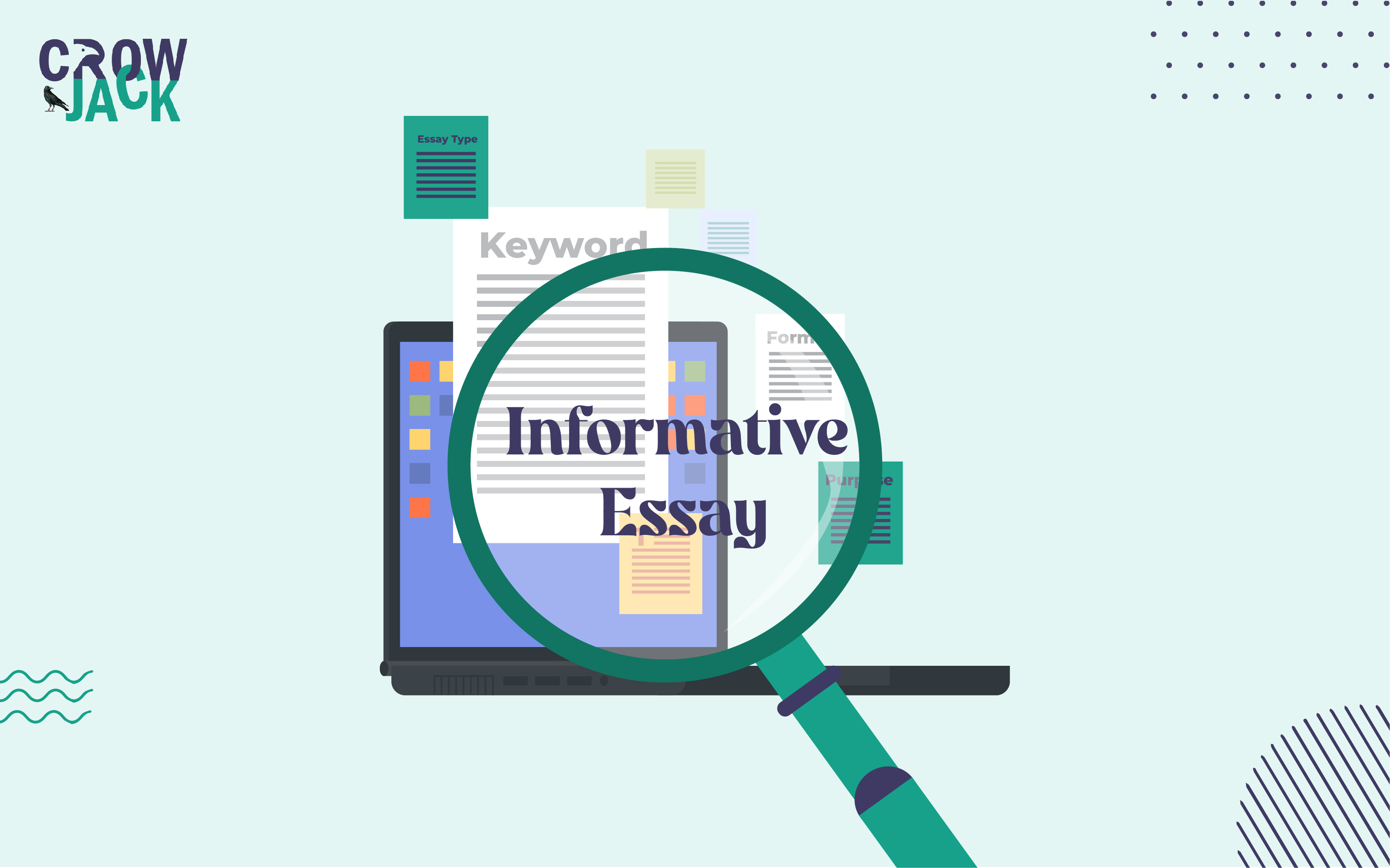Table of Contents
Essay Outline Toolkit
Well, one thing you need to work on before writing an essay is to set its structure. Once, you are done writing the structure of your essay, writing an outline will become an easier task. In this guide, not only will we explain how to write an outline for an essay but also explain how to create its structure. So let's get started.
Also, are you in a hurry? No worries, we have curated an essay outline toolkit that will help you understand the process of writing an outline for an essay in under 5 mins.
| Action Item | Notes | Example |
|---|---|---|
Step I | The first step in creating an outline for any essay is to identify the topic you will be writing on, this would involve clearly stating what the essay is going to be about. This would provide your reader with an idea of what to expect in the essay. | Imagine your professor asked you to write an article on air pollution, in such case your topic can be “The Impact of Air Pollution on Human Health” |
Step II | Once you've identified your topic, the subsequent step involves clarifying the purpose of your essay. Are you aiming to inform, persuade, or entertain your readers? In essence, what is your goal with this essay? | The objective of this essay is to inform your readers about the serious health risks associated with exposure to air pollution, with the goal of raising awareness about the need for stricter environmental regulations. |
Step III | This section of your outline is dedicated to crafting the central argument, known as the thesis statement, for your essay. This statement serves as the cornerstone of your essay, encapsulating its main idea and providing guidance for the overall flow of your writing. | The thesis statement for this essay could be: "The harmful effects of air pollution on respiratory and other body systems underscore the urgent need for comprehensive pollution control measures” |
Step IV | Now, it's time to chart the course for your essay by outlining the key components. Define the main points you'll be addressing and specify the supporting points that will strengthen your thesis. | The main points for your essay could be
|
Step V | After introducing the main points of your essay, the next step involves in-depth elaboration on each of these points, substantiated by relevant examples. In this section, you will explicitly outline the main points to be discussed and specify the examples that will reinforce your arguments. | In your main point “Types and sources of air pollutants”, sub-points you can include can be
|
Step VI | Academic essays will require you to cite all information presented, along with the need to attribute examples, quotes, and data that support your arguments. Within this context, you should clearly outline the sources from which you will be citing information. | You can cite scientific studies from the World Health Organization (WHO), and provide statistical data on yearly deaths due to air pollution. |
Step VII | A hook serves the purpose of capturing the reader's attention and piquing their curiosity. Various types of essays employ different hooking strategies. In this section, you will specify the type of hook you intend to use, whether it's a quotation, a compelling fact, or another approach. | You can start the introduction with an anecdote like “Imagine taking a deep breath of fresh, clean air. Unfortunately, for millions of people worldwide, this simple pleasure has become a luxury due to the pervasive issue of air pollution” |
Step VIII | After you have stated your key points, it's time to conclude your essay. In this section, you will reiterate your thesis statement and provide a summary of the central argument and the key points discussed in your essay. | In the conclusion, you will restate the thesis by emphasizing the urgency of addressing air pollution and then summarize key points you made in the essay. |
Step IX | Transition words play a crucial role in ensuring the seamless flow of your writing, facilitating smooth transitions between sentences, paragraphs, and topics. In the following section, you will define how these transitions will connect the various topics within your essay. | You can use words like “furthermore”, and “consequently” to transition from “types and sources of air pollutants” to “the health consequences of prolonged exposure to air pollution” |
Step X | With your outline complete, take a moment and revisit all the content you have written till now in order to maintain consistency and avoid any sort of writing mistakes throughout your text. | Finally, during the review, you will need to ensure that each point flows logically and you have included all the necessary information and didn't add any extra points. |
Once you are done with these steps, this is what your structure will look like
Thesis statement: To inform readers about the serious health risks associated with exposure to air pollution, with the goal of raising awareness about the need for stricter environmental regulation.
Introduction
- Add a hook like Imagine taking a deep breath of fresh, clean air. Unfortunately, for millions of people worldwide, this simple pleasure has become a luxury due to the pervasive issue of air pollution.
- Mention how the negative impact of Air pollution on human health is increasing.
Thesis
The harmful effects of air pollution on the respiratory system underscore the urgent need for comprehensive pollution control measures.
The types and sources of air pollutants
- Explanation of common air pollutants (e.g., particulate matter, volatile organic compounds).
- Examples of industries or activities contributing to air pollution.
Transition phrases - Furthermore, additionally, etc.
The health consequences of exposure to air pollution
- Discuss different Respiratory Health Issues like asthma and its symptoms.
- Discuss Other Different Health issues like heart attacks and their symptoms.
Current environmental policies and their effectiveness in mitigating air pollution
- Discuss about various environmental agencies and organisations along with the standards set and initiatives taken by them.
- Challenges and Effectiveness - Discuss the evolution of policies and technological advancements in the field.
Conclusion
- Reiterate the thesis statement.
- Reinforce the importance of addressing air pollution and its impact on health.
- Recap the types, effects, and mitigation strategies discussed in the essay.
This is what your outline will look like
Firstly, the essay will discuss the types and sources of air pollutants by highlighting industrial and individual activities contributing to air pollution. Secondly, the essay will shed light on the health consequences of air pollution by emphasizing respiratory and other health diseases. Finally, the essay will be concluded by discussing the current environmental policies and their effectiveness in controlling air pollution by checking the standards set by organizations and initiatives taken by agencies.
How to write an essay outline
1. Identify the topic
Identifying your essay's topic is the crucial first step. Begin by asking yourself these questions: Do you have a genuine interest in this topic? Does it resonate with you emotionally or intellectually? Your passion for a topic will fuel your essay.
However, don't rely solely on emotion. Consider these factors:
- Is the topic suitable for your audience?
- What's your purpose for writing about it?
- Can you gain sufficient knowledge in the given time?
- Is the topic neither too broad nor too narrow for the required word count?
- Can you access enough research material?
Additionally, if your chosen topic feels too broad, narrow it down by focusing on a specific aspect or perspective. This ensures better manageability and clarity in your writing.
Imagine your professor asked you to write an article on air pollution, in such case your topic can be “The Impact of Air Pollution on Human Health” This clearly states that your essay will look into the effects of air pollution on human well-being.
2. Define the objective
Once you've chosen your essay topic, the next step is to define your purpose. Majorly, your essay should convey your unique perspective, thoughts, and ideas about the subject. So, Emphasize working with and building upon existing ideas rather than just restating them. Other than that some specific objectives may include:
Narration: This is written for the purpose of sharing personal experiences or goals in a compelpng manner for self-expression.
Persuasion: This is written for the purpose of convincing readers about the argument you agree with through logical reasoning.
Argumentation: This is written for the purpose of taking a clear stance on a topic and supporting it with evidence.
Explanation: This is written for the purpose of providing effective information or descriptions to readers.
The objective of this essay is to inform your readers about the serious health risks associated with exposure to air pollution, with the goal of raising awareness about the need for stricter environmental regulations.
3. Craft the thesis
This step involves stating the core message you aim to convey through your project. In essence, you're crafting a concise and clear statement that summarizes the central argument or theme that your entire work revolves around. Additionally, It's a critical element that ensures your project remains coherent and purposeful, allowing your readers to understand the primary point you're trying to make.
Crafting a thesis statement is a dynamic process. It doesn't happen immediately after reading an assignment. Instead, it involves gathering evidence, organizing it, identifying relationships, and assessing their significance. Only after completing these steps will you arrive at a 'working thesis.' This thesis serves as the cornerstone of your essay, presenting its main idea and argument, which you'll substantiate with evidence. Both your argument and thesis act as guiding forces for your essay's structure, and they may require refinements as your essay evolves.
The thesis statement for your essay could be: "The harmful effects of air pollution on respiratory and other body systems underscore the urgent need for comprehensive pollution control measures."
4. Main points
Now that you have a clear understanding of your essay's purpose and argument, the next crucial step is to construct the foundational main points that will serve as the guiding framework for your essay. This involves delving into each main point and elaborating on the essential information that will form the core of your essay. This structural map helps you organize your thoughts, ideas, and information in a logical sequence, making it easier for both you as the writer and your readers to follow the flow of your project. it helps you ensure that your points are aligned with your thesis statement and are able to explain them.
Also, It is important to ensure that each main idea in your essay is completed within its dedicated body paragraph. Because overloading a single paragraph with multiple concepts can lead to confusion and errors in sentence structure. Moreover, each main point you introduce should directly align with your thesis and provide substantial support for any arguments you propose.
The main points for your essay could be
- The types and sources of air pollutants.
- The health consequences of prolonged exposure to air pollution.
- Current environmental policies and their effectiveness in mitigating air pollution.
5. Sub-points
After outlining the key main points, proceed to introduce the specific subpoints you intend to elaborate on, as well as the supporting evidence such as examples, quotations, statistical data, and more that will strengthen your arguments.
This process will help you dissect each major part into more manageable components, making your project more organized and comprehensible. By defining these sub-points, you provide a roadmap not only for yourself but also for your readers.
The types and sources of air pollutants
- Explanation of common air pollutants (e.g., particulate matter, volatile organic compounds).
- Examples of industries or activities contributing to air pollution.
Transition phrases - Furthermore, additionally, etc.
The health consequences of exposure to air pollution
- Discuss different Respiratory Health Issues like asthma and its symptoms.
- Discuss Other Different Health issues like heart attacks and their symptoms.
Current environmental policies and their effectiveness in mitigating air pollution
- Discuss about various environmental agencies and organisations along with the standards set and initiatives taken by them.
- Challenges and Effectiveness - Discuss the evolution of policies and technological advancements in the field.
Conclusion
- Reiterate the thesis statement.
- Reinforce the importance of addressing air pollution and its impact on health.
- Recap the types, effects, and mitigation strategies discussed in the essay.
6. Evidence and citations
After summarizing the points you intend to discuss and the information you'll be presenting, proceed to cite the evidence, including examples and statistical data, that supports your information. This is where you'll list down the sources from which you'll draw your information, examples, and statistical data.
Listing these sources will help you to make sure that you have a well-structured plan for gathering the necessary information to support your writing. This step will help you stay organized and ensure you don't miss any critical data or overlook important references. Additionally, help in keeping all the information in one place will ease your writing process.
You can cite scientific studies from the World Health Organization (WHO), and provide statistical data on yearly deaths due to air pollution
7. Introduction and hook
After you're done writing an outline for your key content and have identified your information sources, the next step will be to craft an engaging introduction hook tailored to the nature of your essay. A hook is a sentence or phrase designed to captivate and grab the attention of your readers and can take various forms, such as a quotation, statistical data, or an intriguing fact.
Also, you craft the introduction in which your primary objective is to provide essential context and introduce the main idea or thesis statement of your project. This section acts as a guide for your readers, setting the stage by explaining what your project is about and why it matters. For your introduction, state the points you will be mentioning, along with a hook that will be designed to captivate and grab the attention of readers.
You can start the introduction with an anecdote like “Imagine taking a deep breath of fresh, clean air. Unfortunately, for millions of people worldwide, this simple pleasure has become a luxury due to the pervasive issue of air pollution” and then continue to explain the increasingly negative impact of air pollution on human health
8. Conclusion
In this section, you will bring your essay to a close by revisiting your thesis statement and reinforcing the central argument you've presented throughout. Also, you'll summarize the key points made in the essay and conclude with a compelling call to action. This section serves as a final, concise overview, allowing your readers to grasp the main takeaways from your work.
In the conclusion, you will restate the thesis by emphasizing the urgency of addressing air pollution and then summarize key points you made in the essay.
9. Transitions
Transition words play a crucial role in ensuring the seamless flow of your writing by fostering smooth transitions between sentences, paragraphs, and topics. After completing your outline, it's essential that you identify and incorporate transitions wherever needed to facilitate smooth transitions between sentences, ideas, or topics. Some common types of transitions are listed below
Addition: This is used when multiple ideas are presented that flow in the same direction
Contrast: This is used when a difference in idea or change in the argument is presented
Comparison: This is used when a similarity between ideas that are not under the same heading is presented
Cause and effect: This is used to show that an event or action leads to some result
Summary or conclusion: This is used when we want to signify what follows is summarizing the previous text.
You can use words like “furthermore”, and “consequently” to transition from “types and sources of air pollutants” to “the health consequences of prolonged exposure to air pollution”
10. Refine and review
Lastly, in the final step, you will do a review of your outline to check for any extra elements that may have been unknowingly included. Additionally, ensure that your outline provides a thorough and complete overview of your topic, leaving no important points overlooked.
Finally, during the review, you will need to ensure that each point flows logically and you have included all the necessary information and didn't add any extra points
Outline for different types of essays
1. Argumentative Essay Outline

An argumentative essay outline have a straightforward structure which makes it easy for readers to follow. The goal of an argumentative essay is to clearly outline a point of view, reasoning, and evidence.
2. Persuasive Essay Outline

A persuasive essay is used to prove a point of view. For this reason, drafting an outline for a persuasive essay becomes important as it ensures emotional components and helps not to get confused in your supporting proofs.
3. Informative Essay Outline

An informative essay outline have a straightforward structure which makes it easy for readers to follow. The goal of an informative essay is to clearly outline a piece of information, its reasoning, and evidence.
4. Narrative Essay Outline

A narrative essay is a type of essay in which the writer narrates a story. The story could be real, or fictional, and deals with writer’s personal development. An outline of a narrative essay doesn't follow any specific rules.
5. Rhetorical Essay Outline

A rhetorical analysis essay in an essay type that aims to study how the author persuaded, informed, or entertained the audience. This type of essay analyzes the text in specific terms of rhetoric, breaks them, and examine them individually.
6. Compare and Contrast Essay

Compare and contrast essays are academic papers in which a student analyses two or more subjects with each other. The structure mention paragraphs that describe two subjects, and then conduct a final analysis.
7. Expository Essay Outline

An expository essay presents information on a topic, it explains a situation, person, idea, etc. An expository essay outline divides each paragraph into components for the purpose of better understanding how information will work together.
8. 5-paragraph essay outline

An 5-Paragraph Essay outline have a straightforward structure which makes it easy for readers to follow. The goal of an 5-Paragraph Essay is to clearly outline a point of view, reasoning, and evidence.

 Proof Reading
Proof Reading  Copy Writing
Copy Writing  Resume Writing
Resume Writing  Blogs
Blogs Guides
Guides SOP's
SOP's Student Resources
Student Resources Research Topics
Research Topics Login
Login Register
Register








